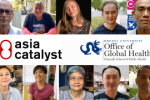By Josh Clarkson
On the eve of the Shanghai Expo, China has lifted its two-decade prohibition on
entry by foreigners living with HIV/AIDS, sexually transmitted diseases and
leprosy. China’s State Council announced the repeal on April
27th, saying that the government had concluded that the ban
has little or no effect in combating epidemics within China’s borders.
The move has been lauded by international organizations such as UNAIDS,
the World Health Organization (WHO), and the
U.S. government. UN Secretary General Ban Ki-moon personally “commend[ed]
President Hu Jintao” for taking this positive step in the fight against
HIV/AIDS and urged other governments to take similar steps and lift any travel
restrictions imposed upon people living with HIV/AIDS (PLWHA). UNAIDS decried
such restrictions as not only discriminatory, but also ineffective, and lacking
in either scientific or economic justification.
While China and the United States have recently lifted travel regulations targeting
PLWHA, and Namibia and the Ukraine have pledged to do so, many governments
refuse to take such steps. 51 states impose some type of restrictions, 23
deport PLWHA once that status is discovered and five deny even short tem entry
to PLWHA. (South Korea recently announced the lifting of a travel ban, but in
practice restrictions remain; see Ken Oh’s blog
on this for more.)
Mark Stirling, country coordinator of the UNAIDS China Office, told
China’s Xinhua news agency that he believed the move would increase
opportunities for PLWHA both within China and around the world. But Xinhua also
reports that the decision to lift the ban is quite unpopular with the Chinese public,
with one survey showing 84% of respondents opposed to lifting the ban. Discrimination
against people with HIV/AIDS remains widespread in China.
The Chinese Health Ministry estimates that 740,000 people in China were living with HIV/AIDS
by 0ctober of 2009 and that the disease has claimed nearly fifty thousand lives
since first reported in China in 1985. Local AIDS doctors and activists suggest
that the true number of people living with HIV/AIDS may be significantly higher
than these estimates.
Josh Clarkson is a graduate researcher at Asia Catalyst.




